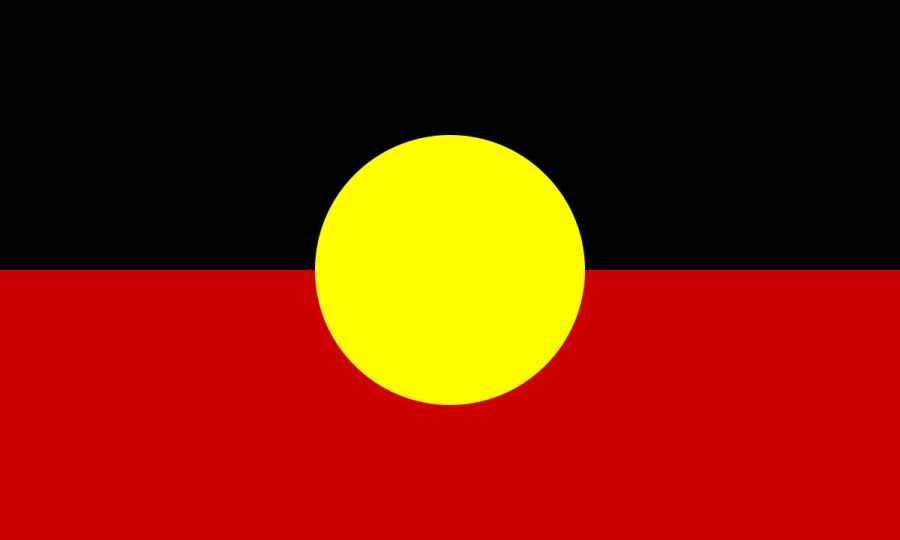The Tufts University Art Gallery presents Aboriginal Australian artist Richard Bell: Uz vs. Them, from September 8 to November 20. Tufts University will be the first of four venues to host this mid-?career survey exhibition of works by contemporary Australian Aboriginal artist Richard Bell, the first-?ever U.S. tour of Bell’s work. A figure of increasing international stature, Bell describes himself as “more an activist than an artist,” and indeed much of his work is politically charged, addressing issues such as the racist Australian culture within which he finds himself. Bell’s vivid and provocative paintings and videos signal an important and powerful voice in contemporary art. This politically charged, cheeky, and humorous exhibition was curated by Maura Reilly (Professor of Art Theory at Queensland College of Art, Griffith University, Queensland, Australia, and formerly Senior Curator of Exhibitions at the American Federation of Arts) and organized by the American Federation of Arts (AFA).
A self-?taught artist, Richard Bell uses a wide range of media including painting, performance, and video to humorously challenge the commodification of indigeneity in the western art market. Bell draws attention to the frustrations and grievances caused by the colonization of Australia. His paintings play with the practice of appropriation, often mining the styles of Pop artists Roy Lichtenstein and Jasper Johns, the paint drips of Jackson Pollock, or the dot matrix style of Aboriginal painter Emily Kngwarreye, while also including texts that complicate the way we think about racism and race politics. Richard Bell was born in 1953 in Charleville, Queensland, Australia, and is a member of the Kamilaroi, Kooma, Jiman and Gorang Gorang communities. Based in Brisbane, Bell has held numerous solo exhibitions since 1990. For 20 years prior to that, he was a full-?time activist for Aboriginal rights. He is represented in major collections in Australia and New Zealand and internationally recognized through numerous exhibitions.
Bell is probably best known for his “theorems,” a series of paintings with declarative pro-?Aboriginal statements. Among his most famous is Aboriginal Art—it’s a white thing (2002), in which he accuses the contemporary art world of manipulating and exploiting indigenous art while he himself ironically utilizes an earthy palette and brushstroke derived from traditional Aboriginal desert painting in his work. Another “theorem” in the exhibition, Wewereherefirst (2007), which features a multi-?colored Jasper Johns target in the center, speaks to a universal indigenous voice in the struggle against the continued colonialist stronghold. In his most recent “theorem,” Pay the Rent (2009), Bell demands back rent from the colonizers as restitution for what they owe to the colonized Aborigines since “the invasion” in 1788. Likewise, in the provocative video Scratch an Aussie (2008), Bell overturns political and social norms by charading as a black Sigmund Freud who psychoanalyzes racist white Australians. The exhibition will also debut Bell’s new video Broken English (2009), in which the artist plays chess with indigenous politics, asking white and black Australians why Aborigines appear to lack a vision of their own future, often encountering strongly contradictory views. In her foreword to the exhibition catalogue, critic Eleanor Heartney observes that Bell “wields his art like a scalpel, using it to get under the skin of contemporary Australian culture in order to scrape away the accumulated contagions of history. In the process, he provides a remarkably effective model for thinking about larger issues as well. He reminds us that none of us can escape the paradoxes of identity and authenticity in a post-?colonial world.”
PUBLIC EVENTS IN ASSOCIATION WITH RICHARD BELL: US VS. THEM
Public Opening Reception
Thursday, September 15:
5:30 to 8:00 pm: Reception
6:00 pm: Welcome from the Wampanoag Homelands
6:15 pm: Conversation with the artist
Shared Experiences: Indigenous Voices
Thursday, October 20:
6:00 pm: Guided Exhibition Tour
7:00 pm: Panel Discussion
“A Brief History of Australian Art”
Thursday, November 17:
5:30 pm: Guided Exhibition Tour
6:30 pm: Special Event
Uz Vs. Them Film Series
Thursday, September 29
8 pm: Rabbit Proof Fence (2002; 94 min.)
NightCries:A Rural Tragedy (1990; 19 min.)
Thursday, October 13
8 pm: In the White Man’s Image (1992; 60 min.)
We Still Live Here (2010; 57 min.)
Thursday, November 3
8 pm: Walkabout (1971; 100 min.)
TUFTS UNIVERSITY ART GALLERY
@ THE SHIRLEY AND ALEX AIDEKMAN ARTS CENTER
40R TALBOT AVE, MEDFORD, MA 02155
T: 617.627.3518
http://artgallery.tufts.edu
The Gallery is fully accessible and admission is free ($3 suggested donation).
Gallery hours are Tuesday through Sunday, 11:00am to 5:00pm & Thursdays until 8:00pm.
Free event parking is available in the lot behind the Aidekman Arts Center.

